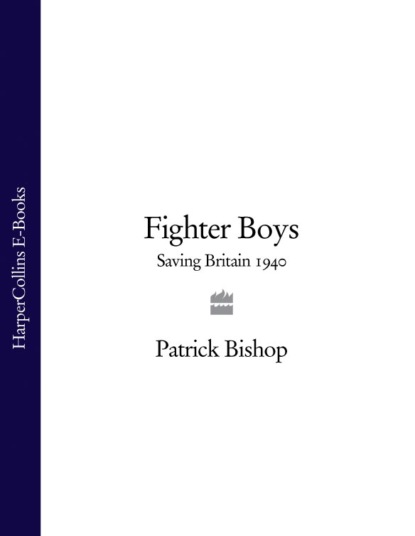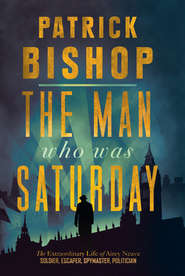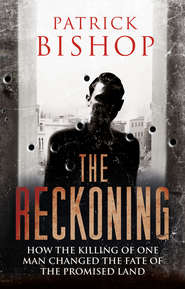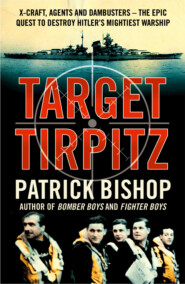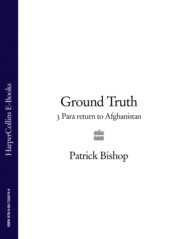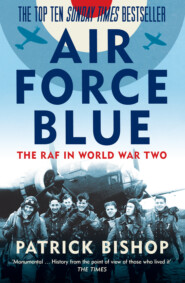По всем вопросам обращайтесь на: info@litportal.ru
(©) 2003-2024.
✖
Fighter Boys: Saving Britain 1940
Настройки чтения
Размер шрифта
Высота строк
Поля
P.S. (#litres_trial_promo)
About the author (#litres_trial_promo)
Portrait (#litres_trial_promo)
Snapshot (#litres_trial_promo)
Top Ten Favourite Reads (#litres_trial_promo)
Life Drawing (#litres_trial_promo)
About the book (#litres_trial_promo)
A Critical Eye (#litres_trial_promo)
The Bigger Picture (#litres_trial_promo)
Read on (#litres_trial_promo)
Have You Read? (#litres_trial_promo)
If You Loved This, You’ll Like… (#litres_trial_promo)
Find Out More (#litres_trial_promo)
About the Author (#litres_trial_promo)
Praise for Fighter Boys (#litres_trial_promo)
About the Publisher (#litres_trial_promo)
Preface (#ulink_e802a29b-7375-5650-af0a-0cb9fdf7b712)
This book is an attempt to answer a question that has fascinated me since I was a child. I grew up in Kent and London in the late 1950s and early 1960s, when the Second World War was still a real presence. There were daily reminders of it in the weed-choked gaps between houses where German bombs had fallen and the muddy Anderson shelters that could still be found in suburban back gardens.
My first years were spent in the village of Charing. One of my earliest memories is of walking with my father, mother and sister through a ground mist of bluebells in Long Beech woods on the ridge above the village, close to the Pilgrim’s Way. Not long before the skies overhead had been a battleground. Occasionally my playmates and I found cartridge cases rusting underneath the ferns that we imagined had tumbled from the heavens during the fighting. Later I learned that a fighter pilot had crashed in flames into Long Beech after being shot down in the autumn of 1940.
We boys knew all about the Battle of Britain from small, square comic books, describing the great events of the war, that we bought eagerly as soon as they appeared in the village newsagent. They were our first history books. There, for the first time, we met heroes other than our fathers. It was the fighter pilots who hijacked our imaginations. We acted out their deeds in our games and dreamed about being them when we grew up. Their style and dash made them much more glamorous than the earthbound drudges of the infantry. Adults seemed to think so too. The Battle of Britain was mythologised before it was even over and those who took part in it were bathed in the glow of the legend.
At adolescence you shed your old heroes and get a new set. For a while it was slightly embarrassing to recall the passion that the silhouette of a Hurricane or the smudged snapshot of a young pilot once provoked. The grown-ups also seemed to have moved on. This was the Sixties. Men in uniform were now the targets of mockery.
Then, in the funny way that the recent past becomes suddenly almost as remote as the Dark Ages, the pilots slipped into history. There were plenty of books about the battles they fought and their crucial importance to the twentieth century. But they themselves grew obscure, blurred and monochrome like the photographs they took of each other, always smiling, as they hung about at dispersal, waiting to take off.
In the pages that follow I have tried to colour in the picture and to answer the question: What were the Fighter Boys really like? My researches have been helped by the generosity of many people. I am particularly grateful to Malcolm Smith of the Battle of Britain Fighter Association for pointing me to the veterans whose reminiscences enrich this story and answering many queries with his celebrated kindness, good humour and patience. The survivors are men of their time. Everyone I approached was unfailingly courteous, helpful and hospitable. Meetings were invariably a pleasure. The Fighter Boys retain their joie de vivre. The contribution of individuals is made clear in the text, and to each of them I give my thanks. Without them the book could not have been written. I would like to make special acknowledgment to Group Captain Billy Drake, Air Commodore Peter Brothers and Air Chief Marshal Sir Christopher Foxley-Norris for the repeated calls I made on them. Group Captain John Cunningham, Hugh Heron, Squadron Leader Jocelyn Millard, Group Captain Anthony O’Neill, Wing Commander Harbourne Stephen and Flight Lieutenant William Walker were also generous with their time.
I was fortunate to be given access to several unpublished texts. Among them was Tim Vigors’s splendid autobiography, which has yet to appear in print, a situation which I hope will soon be rectified. I am also grateful to the Beaumont family for allowing me to see S. G. Beaumont’s Reminiscences, to the Fenwick family for sending me Charles Fenwick’s account of a young pilot’s life, Dear Mother, and to Michael Butterworth for enabling me to see Group Captain Frank Carey’s personal history. Squadron Leader Dennis Armitage supplemented his talk with me with his written account of the summer of 1940. Edith Kup was kind enough to spend a wintry afternoon filling in some of the gaps in the story of her love affair with Denis Wissler and to allow me to see his letters. Valerie Preston shared with me some of her souvenirs of the White Hart and Robin Appleford has allowed me to reproduce some glimpses of off-duty life in 66 squadron.
I would also like to thank Mrs Lesley Kingcome, her mother Sheila, her daughter Samantha and her son Gavin for their hospitality in Devon and for their memories of the late Brian Kingcome, as well as for permission to quote from his memoir, A Willingness to Die. I am grateful, too, to Sarah Quill for talking to me about her father Jeffery and for showing me letters from the family archive, and to Yvonne Agazarian for sketching in some details of her brother, Noel.
Our understanding of the ethos of Fighter Command has been helped greatly by the work of the Imperial War Museum, which more than 20 years ago set out to record the testimony of many of those engaged in the air battles of 1940 and preserve them in its sound archive. These interviews have provided much fascinating material and I am grateful for permission to reproduce extracts. The staffs of the Sound Archive, Department of Documents and Printed Books, Photograph Archive and Film and Video Archive were always helpful and efficient. I also want to thank Gordon Leith and his team at the Department of Research and Information Services at the RAF Museum, Hendon and the staff of the Public Record Office in Kew for their patience and the hard work they did on my behalf. Jean Buckberry was a gracious guide to the Royal Air Force College, Cranwell and its library. The staff of RAF, Benson, provided me with the records of the Oxford University Air Squadron in the interwar years.
In another, very different, area of research, I would like to thank Rod Dean, himself a former RAF fighter pilot, for taking me through the basic manoeuvres of a dogfight in a Harvard trainer in the skies above Tangmere and for explaining the principles of air fighting.
My task would have been much more difficult if it were not for the work done by several aviation historians of the period. I am indebted to Ken Wynn for the definitive research contained in Men of the Battle of Britain and to Christopher Shores and Clive Williams for the wealth of detail found in their two-volume Aces High. The chronology was greatly aided by reference to Francis K. Mason’s Battle Over Britain. The writings of Norman Franks, H. Montgomery Hyde, John James, Dr Tony Mansell, Dilip Sarkar, Richard C. Smith and John Terraine were always illuminating.
Thanks are due to the Grub Street team, who continue to ensure that the voices of those who fought the Second World War are heard, for permission to quote from Dennis David’s My Biography, and Shot Down In Flames by Geoffrey Page, to Hutchinson for extracts from Flying Start by Hugh Dundas, reprinted by permission of the Random House Group Ltd, who also allowed me to use passages from Alan Deere’s memoir Nine Lives. Wing Commander Paddy Barthropp allowed me to make use of his autobiography Paddy. I am also grateful to Cassell Military for letting me reproduce parts of Paul Richey’s classic, Fighter Pilot.
Franziska Thomas put me in touch with German Luftwaffe veterans and was a skilful translator of my talks with them. My friend Sophia Coudenhove was a model researcher, a shrewd and indefatigable toiler in the archives and a source of cheer. Nick Farrell, Harry de Quetteville and Hugh Schofield gave encouragement and ideas when the going got heavy. Charles Moore, Editor of the Daily Telegraph, and Alec Russell, Foreign Editor, were generous and understanding bosses. My gratitude is due to Leslie Bonham Carter for providing a wonderful working environment at Bussento at a crucial stage of writing.
In closing I would like to mention my late father, Ernest Bishop, himself an RAF man, in whose endlessly-leafed through wartime photograph albums the germ of this project perhaps lies. It would have lain dormant, however, were it not for the intervention of my agent David Godwin, who devoted his great talent and energy to getting Fighter Boys airborne. The process was helped enormously by the professionals at HarperCollins. I would like to thank Michael Fishwick for his enthusiasm and backing, Kate Johnson for her intelligent appreciation of the subject, Mary Ore and Peter Ford for their meticulous editing and Melanie Haselden for the care she took over the picture selection.
The last acknowledgement should really have come first. My eternal gratitude, Marie darling, for your support and – how shall I put this? – tolerance. Now it is your turn.
Prologue: The White Hart (#ulink_5e43b12c-68a2-5f6d-a4aa-d84a5b0bba16)
At 9 p.m. on Thursday, 15 August 1940, in a low-beamed, tile-hung pub in the Kentish village of Brasted, the conversation faded as a radio was switched on and the familiar pulse of the electronic time signal counted down the seconds to the main BBC news broadcast of the evening.
The voice of the announcer was calm but the events he described could not have been more dramatic. Throughout the day huge formations of German bombers, protected by large numbers of fighter escorts, had been crossing the Channel unloading cargoes of high explosive on military and industrial targets across south-east England.
The report was heard in silence until the newsreader revealed the day’s score. At least 182 enemy aircraft had been destroyed, he claimed, against British losses of only 34 fighters. There was a burst of cheering and a surge to the bar for celebratory drinks. As the radio was switched off the noise in the pub’s stone-flagged bars climbed back up to its normal convivial level.
Most of the men in the White Hart Hotel that evening were pilots from the fighter station at Biggin Hill, seven miles away through ragged, dusty-green lanes, across wheat fields ripened to the colour of wet sand. Watching them was an American journalist who had driven down from London that afternoon. In his report he wrote that he ‘found it incredible that these noisy youngsters were in fact front-line troops, even then in the thick of battle’.
It was true. The boisterous young men, tankards and cigarettes in hand, the top buttons of their slate-blue uniform tunics undone to show the world they were fighter pilots, had been on duty since the first light of what had been an unusually misty summer morning. Some had been in action three times.
The day had seen the most intense air fighting in history. The pilots had won a remarkable victory, though not as great a one as the official figures suggested. In fact seventy-eight German aircraft had been knocked down. It was less than half the number claimed, but there was no doubt that the Luftwaffe had been made to suffer.
Half of the men were from 32 Squadron. At the centre of the crowd was the new commander, Flight Lieutenant Michael Crossley, thin and dark-haired, with deep-set humorous eyes, who at six foot two was half a head taller than the other pilots. Before leading the men off, as the dusk thickened, for pints of the warm sudsy Page & Overton bitter that the White Hart’s landlady Kath Preston served from wooden casks, he had recorded the events of the day.
Down to Hawkinge 1 p.m. and from then on had a remarkably blitzy afternoon. Chased something up to Harwich and got mixed up with 109s going home. Got none. They got Grubby Grice instead who descended into the sea…back to Biggin to refuel. Off to Portsmouth and attacked thousands of 88s and 110s, got three. Refuel again and attack thousands of 17s who were beating up and bombing Croydon. Slapped down seven. ‘Polly’ Flinders took training flight out and he and Humph slapped down one each. Day’s bag twelve.
(#litres_trial_promo)
The 109s mentioned in this laconic entry were the Messerschmitt fighter escorts shepherding the fleets of raiders that arrived in successive waves from late morning. The ‘88s’ were Junkers 88s, twin-engined medium bombers. The ‘110s’ were Messerschmitt 110s, twin-engined fighters, and ‘17s’ were Dornier 17s, another medium bomber. The Germans had come in unprecedented numbers, launching attacks across an 800-mile front that reached from Edinburgh to Exeter in an effort to overwhelm Britain’s air defences and prepare the way for invasion.
The main engagement of 32 Squadron came late in the day. Shortly after 6 p.m., as the sun slipped westward, a force of Me 110s and 109s crossed the Kent coast near Dungeness and raced towards what they thought to be the RAF base at Kenley, a vital station in the RAF defensive system. A mistake in navigation meant they dropped their bombs on Croydon aerodrome instead. The effect was devastating. The bombs crashed between buildings. The blast rolled back and forth to maximum destructive effect. The passenger terminal, which before the war had been a symbol of all that was hopeful and positive about the new world of aviation, was wrecked. Sixty-eight people were killed, all but six of them civilians. There had been no warning. The air-raid sirens sounded fifteen minutes after the attack began.
The streets around the aerodrome were full of people. Newspapers had warned that morning that the air fighting of the previous few days had been only a prelude to the real battle. Invasion fears were excited by the discovery of parachutes scattered across the Midlands and Scotland – but no parachutists. The sight of the bombers sent people running to the earth-and-corrugated-iron shelters they had dug in their back gardens. Others were too absorbed in the drama to take cover. Mr H. J. Edgerton of Couldson watched the Messerschmitts flash past, seemingly only a few feet over the roof of his mock-Tudor home, as ‘about 20 Hurricanes and Spitfires streaked after them. Our fellows attacked them from below and roared up under them in terrific power climbs.’ It was strangely exciting. The engines were ‘screaming deafeningly’. The aeroplanes flew perilously close to each other and ‘time after time I thought the RAF were going to ram the bombers but they swept past them’.
(#litres_trial_promo)
On leaving, the Luftwaffe raked its nails across Croydon’s homely, lower-middle-class face. Bombs tumbled into the streets, ripping up tarmac, blowing out windows and tearing off roofs. A woman emerged from her shelter to find nappies drying on the line shredded by machine-gun bullets. A doomed bomber piled into a row of semis, peeling away the walls, putting on display the modest lives being lived inside.
The Hurricanes of 32 Squadron and Spitfires of 610 Squadron had been unable to block the attack, though they shot down several of the raiders as they ran for home. Despite the deaths and the devastation there were few recriminations about the lack of warning or the level of protection the anti-aircraft defences and the air force had been able to provide. On the contrary, there was intense pride in the sight of the fighters charging in to attack. It seemed to Mr Edgerton that the British pilots had deliberately held their fire for several minutes, ‘because of the danger of bringing the bombers down on the thickly populated district’.
In fact no such restraints were imposed either by the controllers directing the defences or by the pilots themselves. The assumption of selflessness was revealing. Already, after only a few weeks of the air war over Britain, the pilots of Fighter Command were bathed in the light of nobility. The organization was just four years old. Before the spring of 1940 fighter pilots were known as a small, vaguely glamorous elite. Their role in the fighting in France had been peripheral, and, in the great drama of the Dunkirk evacuation, somewhat contentious. Now, with Britain facing possible extinction, they were at the centre of the national consciousness, turning day by day into the heroes of a salvation legend. When people spoke about them it was in an increasingly proprietorial way touched with familial affection. First they were ‘our boys’. Then, by midsummer, they were ‘fighter boys’. The name conveyed everything: their youth, their job, their dash – and the warm regard in which they were held. ‘Stuffy’ Dowding, the pilots’ austere commander, was the first to use it officially, writing in June a letter of congratulation to his ‘dear Fighter Boys’.
By the end of the summer everyone in Britain was in love with them. The air battles of 1940 were intimate affairs. Unlike any external war Britain had been engaged in in the previous thousand years, this one was fought in the sight of the inhabitants of the island, over the territory the pilots were giving their lives to defend. Combat took place above the monotonous roofs of London suburbs, the old market towns and villages of Kent, Sussex and East Anglia, the fields and orchards of the Home Counties. Those below had only to look up to see an unprecedented spectacle: huge masses of bombers and fighters skidding across the cerulean summer sky, scribbling white vapour trails on its placid surface and stitching the blue with the red and gold of cannon and tracer. It was thrilling, and from a distance beautiful and unreal. Then a Heinkel would falter, stagger out of formation, slide into a stricken dive; a Hurricane would spurt flame, roll on to its back and spin down in frantic spirals, and with a final flash and boom the violence reached earth in an ugly tangle of scorched metal and roasted bodies.





